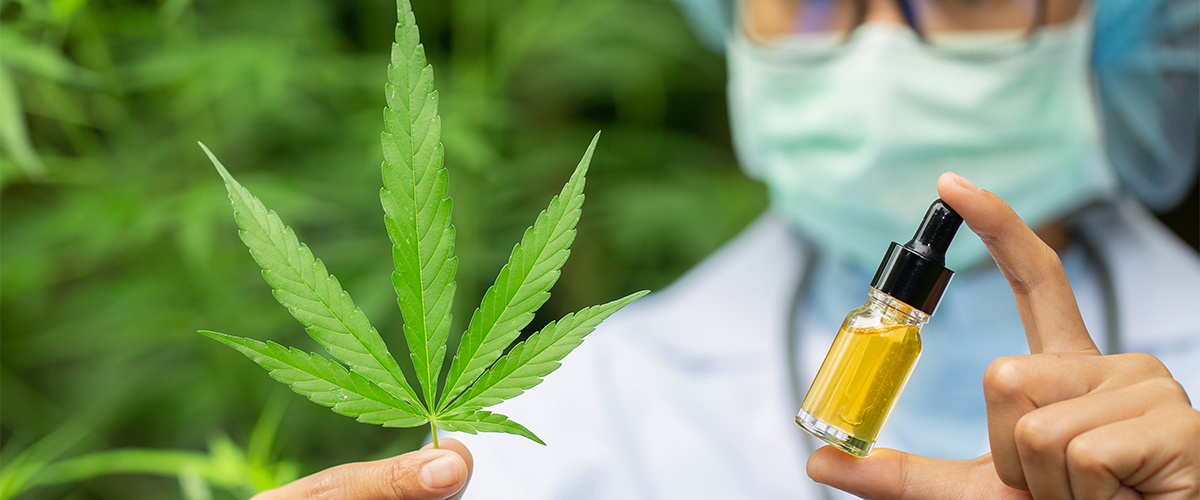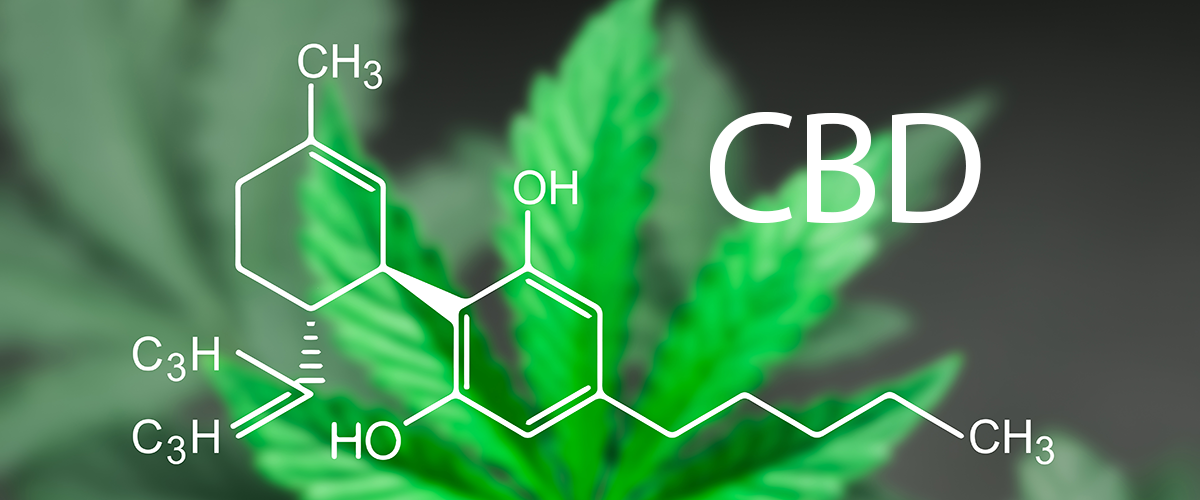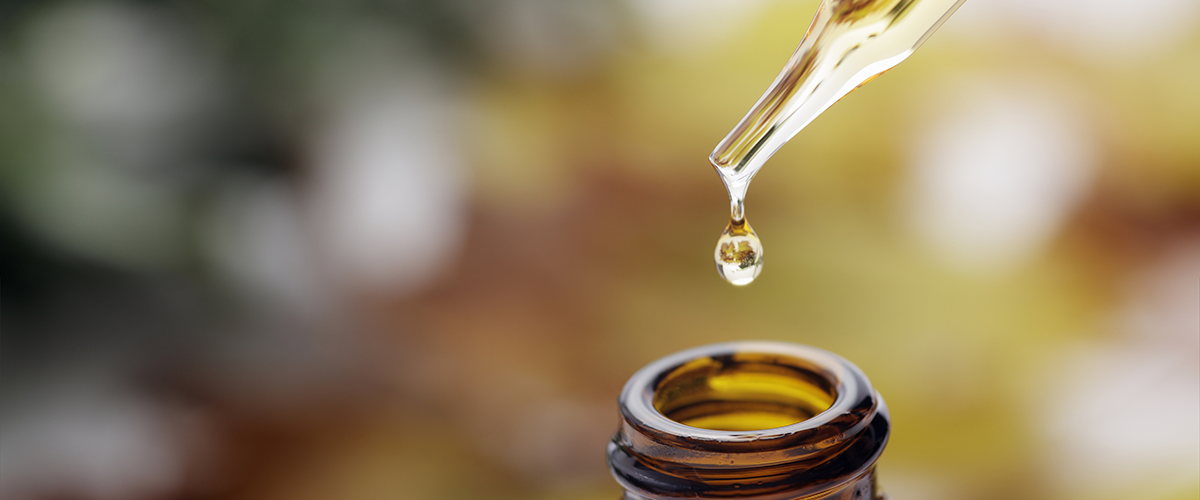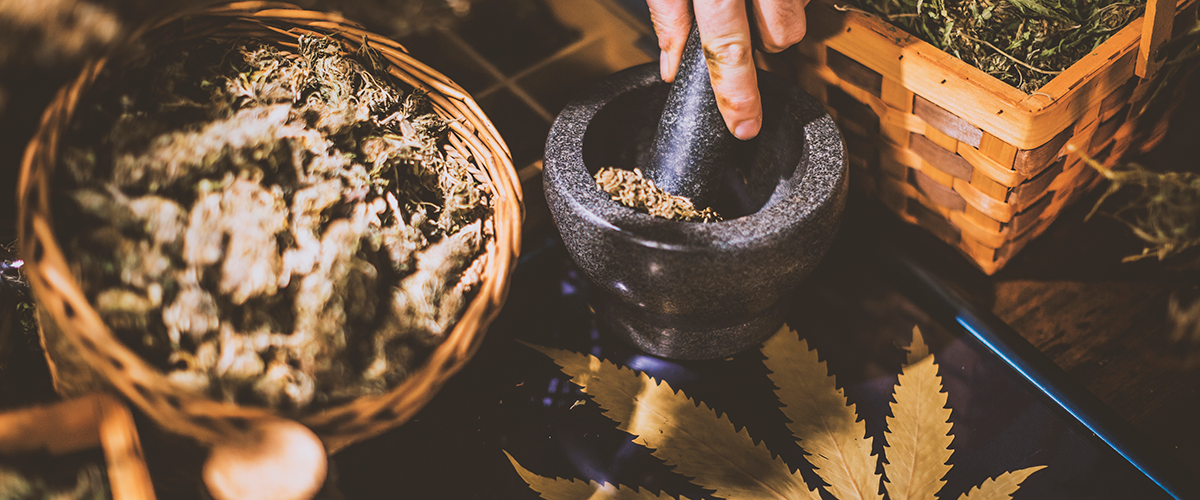
Though THC is the cannabinoid that gets the most attention due to its psychoactive effects, cannabis also produces CBD, which is a cannabinoid that has several positive effects of its own. New studies have been published recently showing some promising new uses for CBD.
Cannabidiol (CBD) is a cannabinoid molecule, like THC, which is produced by the trichome glands of the cannabis plant. Cannabinoid molecules bind to cannabinoid receptors in the body, producing various effects. Unlike THC, CBD is not psychoactive, and is therefore legal in most places and more appealing to people who want to avoid the high that THC produces. It is a muscle relaxant that is known to reduce aches and pains, but that is not all it does. Studies have shown the viability of using CBD as a natural treatment for arthritis, epilepsy, and anxiety. It has been proven to reduce neurotoxicity, alleviate episodes of psychosis, and is an antioxidant as well as anti-inflammatory.
Recent studies indicate that CBD could help treat migraines as well. Though the efficacy of smoking cannabis or consuming edibles to relieve migraines has already been studied, the effects of CBD alone on migraines has only been investigated recently. Since cannabis produces several different cannabinoids and terpenes, it was difficult to tell (until recently) exactly what produced the migraine-soothing effect. However, it is important to discover what CBD alone can do, since many people wish to avoid the psychoactive effects of consuming edibles or smoking marijuana. These people will probably be relieved to know that legal CBD may be able to help their migraine symptoms as well.

Migraines can be incredibly painful and often persist despite trying any of the treatments that have been discovered up until now. Little is known about how to treat migraines or what causes them, and yet they are remarkably common. Approximately 18% of women in the U.S. and 6% of men get migraines. Almost 15% of migraine sufferers experience them at least once a month.
While the exact mechanics of what causes a migraine are unknown, they do appear to occur more frequently when someone is not eating regularly or is dehydrated. A lack of sleep also tends to increase migraines, as well as stress. Drinking too much alcohol may also increase migraine frequency. Studies also indicate that a person is more likely to get migraines if they have family members that experience them, so there seems to be a hereditary component as well. Migraines are different from other kinds of headaches. They are frequently quite severe, and some are nearly unbearable. They are usually experienced as throbbing headaches on one side of the head lasting between 4 and 72 hours.
Migraines might also be accompanied by vision distortion, or an "aura," which could be experienced as blind spots, flashing lights, fuzzy vision, or tunnel vision. Some people also experience chronic migraines or migraines that last for two weeks or more. Migraines might also cause nausea, vomiting, light sensitivity, and sound sensitivity. Most people who experience migraines have a difficult time functioning when it starts.

The endocannabinoid system is a system of cannabinoid molecules and the enzymes that produce them as well as the receptors that they bind to, mainly the CB1 and CB2 receptors. The endocannabinoid system's primary function is regulating different systems in the body. It is a vital part of the nervous system. The endocannabinoids produced by the enzymes perform a variety of functions when they bind to their receptors, from helping direct cell creation to gene transcription. These endocannabinoids are chemically similar to the phytocannabinoids produced by cannabis, which is why cannabinoids like CBD can bind to cannabinoid receptors and produce a variety of effects.
One of the most relevant functions connected to the endocannabinoid system is pain regulation. Some endocannabinoids are believed to inhibit pain signals through the CB1 receptor. CBD is one such endocannabinoid. By inhibiting the release of pain signals, CBD could prove to be a valuable therapeutic tool for a variety of ailments, from arthritis too, possibly, migraines.

Recent research indicates that people who experience migraines might be suffering from endocannabinoid deficiency, meaning that they lack the proper balance of cannabinoids to inhibit pain signals. Anandamide is thought to be one important cannabinoid that helps inhibit pain signals and may be lacking in the bodies of migraine sufferers. Anandamide (AEA) is a chemical produced by the body that has a hand in regulating serotonin receptor activity. Since serotonin is a primary chemical in pain regulation, it is central to the discussion of migraines.
Manipulating the amount of AEA changes the amount of serotonin that binds to serotonin receptors, which affects pain levels. CBD, in turn, affects the amount of AEA in the body. CBD inhibits the reuptake and degradation of AEA, which prolongs AEA's effects. Basically, CBD affects AEA, which affects serotonin, which affects pain, which affects migraines. Through this process, CBD may be used to treat migraines.

CBD can be ingested in several different forms. With CBD's rise in popularity, growers have started breeding strands of cannabis with a high CBD content and little to no THC so that migraines sufferers could purchase CBD-heavy buds and smoke or vape it for relief. Another option is CBD oil capsules, which is one of the most subtle ways to ingest CBD. These capsules are also legal in most places and can be found in shops that are not dispensaries. The capsule is placed under the tongue where it dissolves and is absorbed into the bloodstream very quickly.
People who experience migraines can take CBD and experience relief with little fear of side effects. For many migraine sufferers, this makes it the more attractive option, since common migraine medications do have side effects. If you decide to see if CBD will help with your migraines, make sure you start with a low dosage and increase the dosage slowly. More is not always better with cannabinoids. Cannabinoids (CBD and THC included) have a biphasic effect, meaning a small dosage might relieve a migraine, but a large dose might make it worse. Each individual responds to different dosages differently, so it is impossible to tell any single person what their optimal dosage would be. Therefore, start with the lowest recommended dose based on the form of CBD you are taking and increase the amount slowly from there.